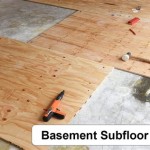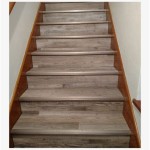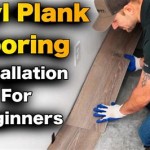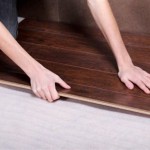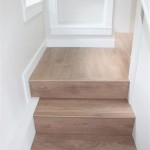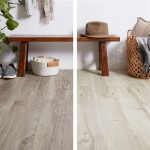```html
Expert Advice on Hardwood Flooring: USA Today 2024 Trends
Hardwood flooring remains a top choice for homeowners in the United States, valued for its durability, aesthetic appeal, and potential to increase property value. Understanding current trends and best practices in hardwood flooring is crucial for making informed decisions, whether one is installing new floors, refinishing existing ones, or simply maintaining their appearance. This article provides expert advice on navigating the hardwood flooring market in 2024, focusing on key trends and practical considerations.
Understanding Current Hardwood Flooring Trends
The hardwood flooring market is dynamic, constantly evolving with new styles, materials, and technological advancements. In 2024, several key trends are shaping homeowner preferences and influencing purchasing decisions. These trends reflect a growing awareness of sustainability, a desire for personalized aesthetics, and advancements in manufacturing processes.
Wider Planks: Wide plank hardwood flooring continues to gain popularity. Planks that are five inches or wider create a more spacious and modern feel. This trend is particularly noticeable in open-concept homes where wider planks contribute to a seamless visual flow. The reduced number of seams can also make a room appear less cluttered and more streamlined.
Lighter Color Palettes: While darker stains have been historically popular, lighter and more natural wood tones are increasingly favored. These colors offer a bright and airy feel, making spaces appear larger and more inviting. Light-colored hardwood floors also tend to hide dust and scratches more effectively than darker options, contributing to a cleaner overall appearance. Popular choices within this trend include white oak, maple, and ash, often finished with a matte or satin sheen to further enhance their natural beauty.
Matte Finishes: Glossy hardwood floors are becoming less common as homeowners opt for matte or satin finishes. These finishes offer a softer, more understated look that complements a variety of interior design styles. Matte finishes also reduce glare and hide imperfections more effectively, making them a practical choice for high-traffic areas. Moreover, they provide a more natural and authentic wood appearance, aligning with the desire for organic and less processed aesthetics.
Engineered Hardwood: Engineered hardwood continues its rise in popularity due to its enhanced stability and versatility. Unlike solid hardwood, which is susceptible to expansion and contraction in response to changes in humidity, engineered hardwood consists of multiple layers of wood veneer bonded together. This construction makes it more dimensionally stable, allowing it to be installed in a wider range of environments, including basements and over concrete slabs. The top layer is typically a high-quality hardwood veneer, providing the same aesthetic appeal as solid hardwood.
Sustainable and Eco-Friendly Options: Sustainability is a significant driver in the hardwood flooring market. Homeowners are increasingly seeking options that are environmentally responsible, from sustainably harvested wood to low-VOC finishes. Bamboo and reclaimed wood are popular choices for those seeking eco-friendly alternatives. Certification programs like the Forest Stewardship Council (FSC) provide assurance that the wood has been harvested from responsibly managed forests.
Textured Surfaces: Hand-scraped, wire-brushed, and distressed hardwood floors are gaining traction. These textures add character and visual interest, creating a more unique and personalized look. These flooring options are also forgiving when it comes to minor dents and scratches, making them a practical choice for homes with children or pets.
Selecting the Right Hardwood Flooring for Your Needs
Choosing the right hardwood flooring requires careful consideration of several factors, including lifestyle, budget, and aesthetic preferences. Understanding the different types of hardwood, their characteristics, and their suitability for various applications is essential for making an informed decision.
Solid Hardwood vs. Engineered Hardwood: Solid hardwood is a single piece of wood, typically ¾ inch thick. It is durable and can be refinished multiple times, making it a long-lasting investment. However, it is more susceptible to moisture damage and is not recommended for installation in basements or over concrete slabs. Engineered hardwood, as previously mentioned, is more dimensionally stable and can be installed in a wider range of environments. It offers a similar aesthetic appeal to solid hardwood but is generally less expensive.
Species Selection: The type of wood species significantly impacts the appearance, durability, and cost of the flooring. Oak is a popular choice due to its versatility, durability, and affordability. Maple is another popular option, known for its light color and smooth grain. Walnut is a premium hardwood with a rich, dark color and distinctive grain pattern. Exotic wood species, such as Brazilian cherry and tigerwood, offer unique aesthetics but may be more expensive and less readily available. When making your selection, consider the hardness of the wood, which is measured using the Janka hardness scale. Harder woods are more resistant to dents and scratches.
Finish Options: The finish not only affects the appearance of the flooring but also its durability and maintenance requirements. Polyurethane is a common finish that provides a durable and water-resistant surface. Water-based finishes are a more environmentally friendly alternative to polyurethane. Oil-based finishes penetrate the wood, providing a natural look and feel. Matte and satin finishes, as previously discussed, are gaining popularity due to their understated elegance and ability to hide imperfections.
Budget Considerations: Hardwood flooring can range significantly in price, depending on the type of wood, the construction (solid vs. engineered), and the finish. It is essential to establish a budget before beginning the selection process. Consider not only the cost of the flooring material but also the cost of installation, underlayment, and other necessary supplies. Obtaining multiple quotes from reputable flooring contractors can help ensure that you are getting a fair price.
Lifestyle Factors: Consider your lifestyle when selecting hardwood flooring. If you have children or pets, you may want to choose a harder wood species with a textured surface to minimize the appearance of dents and scratches. If you live in a humid climate, engineered hardwood is a better choice than solid hardwood. If you are concerned about environmental impact, look for sustainably harvested wood or reclaimed wood options.
Installation and Maintenance Best Practices
Proper installation and maintenance are crucial for ensuring the longevity and beauty of hardwood flooring. Following best practices can prevent common problems such as warping, cupping, and scratching.
Professional Installation: While DIY installation is possible, professional installation is generally recommended, especially for solid hardwood. A professional installer will have the necessary tools, experience, and knowledge to ensure that the flooring is installed correctly and according to manufacturer specifications. Proper subfloor preparation is essential for a successful installation. The subfloor should be level, clean, and dry. A moisture barrier should be installed to protect the flooring from moisture damage.
Acclimation: Before installation, hardwood flooring needs to acclimate to the environment in which it will be installed. This involves allowing the flooring to sit in the room for several days to adjust to the temperature and humidity levels. Acclimation helps prevent warping and cupping after installation.
Regular Cleaning: Regular cleaning is essential for maintaining the appearance of hardwood flooring. Sweep or vacuum the floors regularly to remove dirt and debris. Use a damp mop with a wood floor cleaner to clean the floors. Avoid using excessive water, as this can damage the wood. Never use abrasive cleaners or scouring pads, as these can scratch the finish.
Preventative Measures: Take preventative measures to protect hardwood flooring from damage. Use rugs or mats in high-traffic areas to prevent wear and tear. Place felt pads under furniture legs to prevent scratches. Avoid wearing shoes with high heels on hardwood floors. Clean up spills immediately to prevent staining.
Refinishing: Over time, hardwood flooring may require refinishing to restore its original beauty. Refinishing involves sanding down the old finish and applying a new finish. Solid hardwood can be refinished multiple times, while engineered hardwood can only be refinished once or twice, depending on the thickness of the top veneer. Consider consulting with a flooring professional to assess the condition of the flooring and determine if refinishing is necessary.
By staying informed about current trends, considering individual needs and preferences, and following best practices for installation and maintenance, homeowners can enjoy the beauty and durability of hardwood flooring for years to come.
```
Top 10 Timeless Wood Floor Colors In 2024 Ask The Experts

Flooring Trends 2025 Predictions From 15 Years Experts Wood And Beyond Blog

2025 Design Trends Flooring America

2024 Color Design Trends In The Wood Market

Flooring Trends 2025 Predictions From 15 Years Experts Wood And Beyond Blog

2024 Color Design Trends In The Wood Market

5 New Trends In Flooring For 2024

2025 Flooring Trends This Year S Top 5 More

2025 Flooring Trends Floor Coverings International

2025 Laminate Flooring Trends 10 Stylish Ideas
See Also

